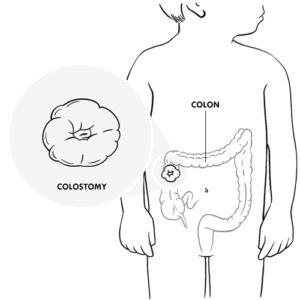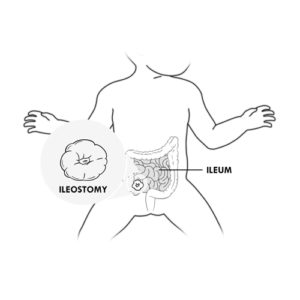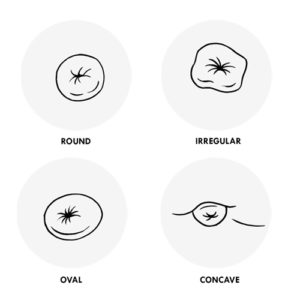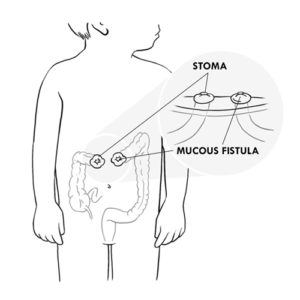
- An enterostomy or ostomy (colostomy, ileostomy) is a surgically created opening of the bowel (intestine) to the outside which allows the body to empty stool (poop) and gas. The end of the intestine, which is brought to the surface of the skin on the abdomen, is called the stoma.
- An enterostomy can be temporary or permanent.


- Your child has no control over the output of stool or gas through an enterostomy.
- The stool (poop, bowel movements) can be:
- liquid, semi-liquid or pasty (usually seen with an ileostomy),
- solid or semi-formed (usually seen with a colostomy).
- Several factors can influence the consistency of the stool.
- The location of the stoma influences the consistency of the stool. The further away from the anus (where stool usually exits the body), the more liquid the stool tends to be.
- The amount and frequency of output through a stoma depends upon many factors, including your child’s diet and activity.
- A healthy stoma looks like a round/oval opening with skin that resembles the inside of the mouth (moist and dark pink/red).
- When your child cries, the stoma can change colour from pale to dark red or even purple; the colour should return to normal once your child is calm.
- The ostomy opening may be swollen for up to 6-8 weeks after the surgery. The swelling usually decreases after this time.
- From the surface of the abdomen, a stoma may appear to be:
- slightly below the level of the skin (retracted),
- at the level of the skin (“skin-deep”),
- on top of the skin (outside or external to the skin), protruding/sticking out slightly (1-2 cm) or protruding moderately (more than 2 cm).
- A stoma may also stick out like a telescope; this may be called a herniation or prolapse.
- The diameter and shape of a stoma may vary.

- Any change in the diameter, shape or length of your child’s stoma should be discussed with your healthcare team.
- The skin on the inside of the stoma is fragile; it can bleed slightly when touched but is not usually painful or sensitive.
- You may notice that the stoma can vibrate or move slightly. This is the normal movement of the intestines, called peristalsis, which normally propels the stool towards the rectum and anus, the usual exit from the body. Your child has no control over the peristalsis.
What happens to the remaining portion of the intestine?
During surgery, the rest of your child’s bowel/intestine, that is, the part that comes after the stoma, may be removed or not, depending on your child’s specific problem.
If the rest of the bowel is kept, it may be:
- sewn closed and left in the abdomen (Hartmann sac) or,
- may be redirected outside of the body via a second stoma (called a mucous fistula).


When there is a section of remaining intestine in the body, it naturally produces some secretions (mucous).
This may be removed from the body via the mucous fistula or, if your child still has a natural rectum and anus, the mucous may come out like a bowel movement, either in the diaper or in the toilet, depending on the age of your child.